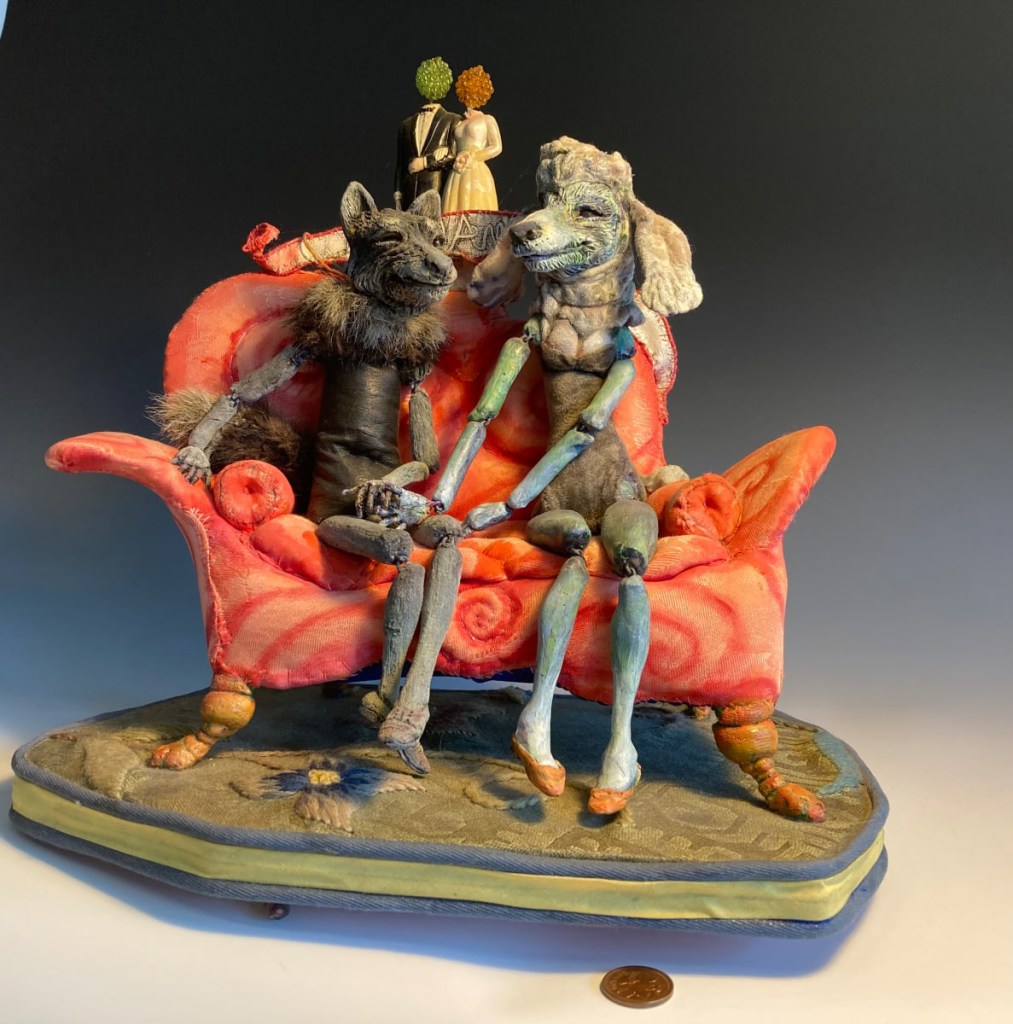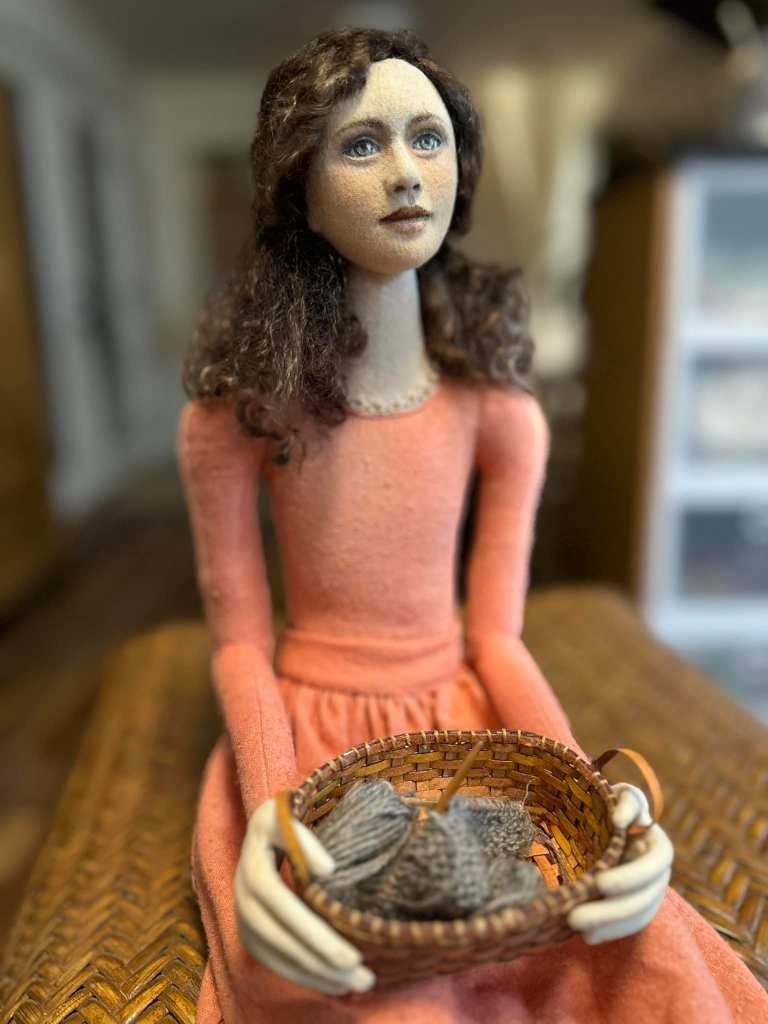
Tatiana Baeva

Audio By Carbonatix
Dolls get a bad rap in the media. For every smiling Barbie and cuddly Cabbage Patch Kid, there’s a creepy Annabelle or murderous Chucky.
If you’re more the “dolls are creepy” type, you may want to avoid the National Institute of American Doll Artists’ event in Mesa this weekend. But if you’re interested in an art form that’s been around for thousands of years, read on.
The cARTel, a creative hub at the OneOhOne Gallery in Mesa, will host an exhibition of 40 mixed-media dolls by 13 artists through Oct. 6.
NIADA was founded in 1963 by four artists; now it’s composed of more than 60 peer-elected artists and supportive patrons continuing to promote the art of the original handmade doll. Dollmakers and doll-lovers now gather annually exchange ideas, learn from each other and share their work.
When news happens, Phoenix New Times is there —
Your support strengthens our coverage.
We’re aiming to raise $30,000 by December 31, so we can continue covering what matters most to you. If New Times matters to you, please take action and contribute today, so when news happens, our reporters can be there.
While cARTel co-founder Meri Wiley is not an NIADA member, she is an award-winning mixed-media doll artist, and the reason the NIADA was able to relocate the annual event to the Valley. She’s wanted to bring a doll show to the West for a while.
“The coordinators of the show came to me because they knew me and they knew I had a new gallery down here, so they wanted to know if I would be a hostess for it, and I jumped at the chance,” Wiley says.
Wiley first started running cARTel out of her home art studio in Gilbert. The move to the bigger facility off Mesa’s Main Street in 2024 opened new doors to share her passion for art and exposing more people to her fantastical world. Wiley has always been fascinated by dolls, picking up the hobby in 2004 after teaching herself how to make them “out of boredom.”
“I would go to different museums and things like that and check them out and I didn’t see any reason why I couldn’t create some, so I started teaching myself,” Wiley says. “Then, through working with other artists and finding out their methods and what have you, I got better and better until I actually became an award-winning doll artist.”

A creation by Jo-Ellen Trilling that is on display this weekend in Mesa.
Jo-Ellen Trilling
Over the weekend, NIADA hosted several programs, such as guest speakers talking about techniques and applications, plus presentations, a luncheon, critiques and a flea market.
Depending on the project, artists can spend anywhere from a few hours to months on a doll. The possibilities are endless, but many artists start with creating the head, bust, limbs and then connect them to the armature. By wrapping the armature in batting and cloth, or molding it out of different clays and polymer, it builds up the body and gives the doll structure and shape.
Artists imbue their characters with personality as they craft tiny eyes and dynamic heads of hair. Custom patterns are made for clothing, accessories and props to fit the concept of the doll. The final step is to pose the creation.
“The common thread that goes through all of it is that they are an artist’s interpretation of either a moment in time or a feeling,” Wiley says. “Each one is individually created by the artist in their preferred medium, whether it’s porcelain or paper, clay or resin … they hand-sculpt, they hand-mold, they hand-create all of the pieces.”
Dolls have been made to depict sacred iconography, use as teaching tools, act as companions and entertainment or simply be something beautiful to look at. In the modern age, being a doll artist is more than just a meticulous process of creating a one-of-a-kind piece. It’s also about marketing, gaining visibility in an effort to get your work sold.
“For everything these days, you have to do social media, so you have to do a lot of photography,” Wiley says. “There’s just so much that goes into the professional side of these dolls. It’s not for sissies.”
Dolls are priced depending on the materials, time and the notability of the artist. Some sell for as much as $10,000. All of the dolls in the Mesa exhibit are available for purchase.
Most members of doll artist community are between 25 and 70 years old, Wiley says. The majority are women.
It takes a lot of time and energy to meet the standards and aesthetic level that separates artistic dolls from commercialized mass-marketed and manufactured ones.

Ann Hord-Heatherley
In the midst of the Labubu craze, with people dropping thousands of dollars on designer clothes for their fuzzy monster dolls, Wiley wishes that the focus was less about the monetary trendiness of the toy.
“I personally don’t think that it’s necessary,” Wiley said. “But I understand it happens and that it’s just a cyclical thing for every generation.”
For her and the artisan doll world, the focus is on highlighting the ingenuity and individuality of each doll, and celebrating the creative process that brings the dolls to life.
“They’re appreciated more for their uniqueness, in a world when most things are not unique,” Wiley says.